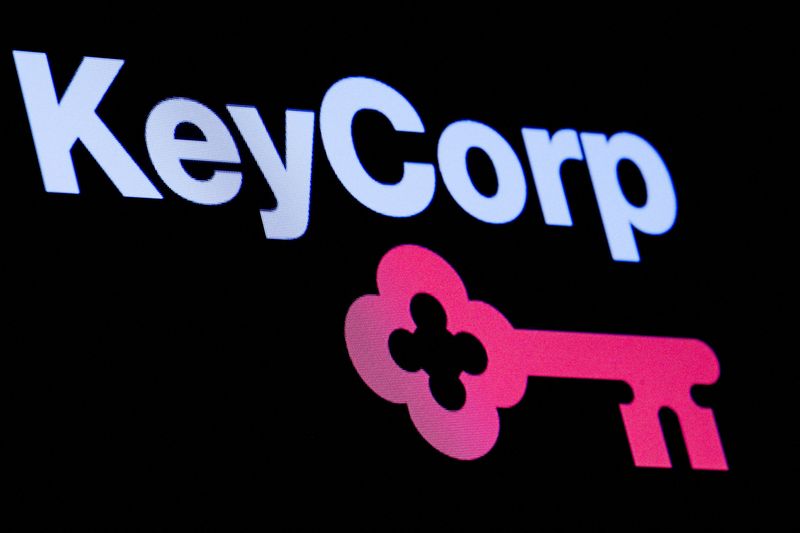By Niket Nishant and Manya Saini
(Reuters) - U.S. regional banks continue to grapple with pressures in their office loan books as remote work stays prevalent, but rate cuts may provide some relief by easing the strain on other commercial real estate (CRE) segments, analysts said.
Nearly a dozen mid-sized and regional U.S. banks reported higher non-performing loans (NPLs) — debt where borrowers missed scheduled payments — in their CRE portfolios in the third quarter compared with a year earlier, a Reuters analysis of earnings reports showed.
Those included KeyCorp (NYSE:KEY) and Fifth Third Bancorp (NASDAQ:FITB).
A looming "maturity wall" could complicate matters further. When loans mature, borrowers must either refinance or repay the remaining balance in full. Failure to do so could lead to defaults and strain banks' balance sheets.
Roughly $950 billion of CRE mortgages are expected to mature in 2024, of which 10% are tied to office properties, according to estimates from S&P Global Market Intelligence.
Office loans present unique challenges due to the rise of hybrid work, which may limit their benefits from lower interest rates.
Rate cuts "may not fully alleviate office pressures in the short term, as the shift toward remote and hybrid work and the increasing use of AI to supplement call centers and other services has fundamentally weakened demand", said Michael Ashley Schulman, chief investment officer at Running Point Capital.
Banks may extend loan terms to delay recognizing the impairment, but such "extend-and-pretend" strategies pose risks to the broader financial system, according to a paper released last week by the Federal Reserve Bank of New York.
Flagstar Financial, formerly named New York Community Bancorp (NYSE:FLG), said it took "substantial charge-offs" of $388 million on its $2.6 billion office portfolio.
The troubled regional lender's large CRE exposure in-part was the trigger behind a sector-wide crisis earlier this year.
KeyCorp reported NPLs of 5.1% in its small office portfolio, versus 2.3% a year earlier.
Fifth Third's office NPLs stood at 0.18% of its total portfolio, up from 0.16% a year ago. The bank is not pursuing new office CRE loan originations.
RELIEF ON THE HORIZON
Portfolios other than office could see some easing as a long-awaited cycle of rate cuts begins, ratings agency Fitch said, noting potential benefits to multifamily loans.
"The Federal Reserve's pivot to interest-rate reductions last month, and the eventual end of its quantitative tightening program ... should create a more supportive backdrop," said Jason Benowitz, senior portfolio manager at investment firm Segall Bryant & Hamill.
Still, it may take banks years to put CRE troubles behind.
"I anticipate continued challenges in CRE in the years ahead. Office demand has been reduced by remote work adoption. Retail space faces a similar headwind from e-commerce adoption. Warehouses were over-absorbed in the pandemic period and have begun a period of normalization," Benowitz said.
According to Running Point's Schulman, lenders must maintain adequate capital beyond 2025 to deal with such weaknesses.
M&T Bank (NYSE:MTB) reported total criticized office loans — those flagged for potential repayment issues — of roughly $1.31 billion, versus $1.22 billion in the second quarter.
U.S. Bancorp said the office portfolio continues to see stress even though the macroeconomic environment has stabilized.
Mirroring trends at peers, its CRE charge-offs and NPLs climbed in the quarter, with the lender attributing it primarily to the office segment.

Earlier this month, Wells Fargo CEO Charlie Scharf said the U.S. banking giant may lose $2 billion to $3 billion on its CRE loan portfolio over the next three to four years, though it has been provisioned.
Flagstar and Fifth Third declined to comment. Others did not immediately respond.